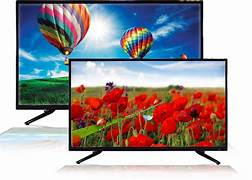Types of led tv
Types of led tv
LED TVs come in various types, each with its own unique characteristics and features. Here are some common types of LED TVs:
Edge-lit LED TV: This type of LED TV has LEDs placed along the edges of the display panel. These LEDs illuminate the screen by directing light towards the center. Edge-lit LED TVs are typically slim and lightweight, but they may have slightly uneven lighting and limited contrast compared to other types.
Direct-lit LED TV: Direct-lit LED TVs have LEDs evenly distributed across the entire back panel. This provides more uniform lighting and better contrast compared to edge-lit models. Direct-lit LED TVs are generally thicker and heavier than edge-lit models.
Full-Array LED TV: Full-Array LED TVs feature an array of LEDs behind the entire screen, allowing for precise control of local dimming and backlighting. This results in superior contrast, deeper blacks, and more accurate lighting across the screen. Full-Array LED TVs can be further categorized based on the number of dimming zones they have, such as "Full-Array Local Dimming" (FALD) or "Full-Array Local Dimming Pro" (FALD Pro), with more zones generally providing better image quality.
QLED TV: QLED (Quantum Dot LED) TVs utilize quantum dots, which are tiny nanocrystals that enhance color reproduction and brightness. These TVs typically have a layer of quantum dots between the backlight and the LCD panel, allowing for more vibrant and accurate colors compared to standard LED TVs.
OLED TV: While not technically an LED TV, OLED (Organic Light-Emitting Diode) TVs are often included in this category. OLED TVs don't require a backlight because each pixel emits its own light. This enables them to achieve perfect blacks, excellent contrast, wide viewing angles, and fast response times. OLED TVs generally offer the best picture quality but tend to be more expensive than LED TVs
These are some of the common types of LED TVs available in the market. Each type has its advantages and features, so it's essential to consider your preferences and requirements when choosing a TV.






Comments
Post a Comment